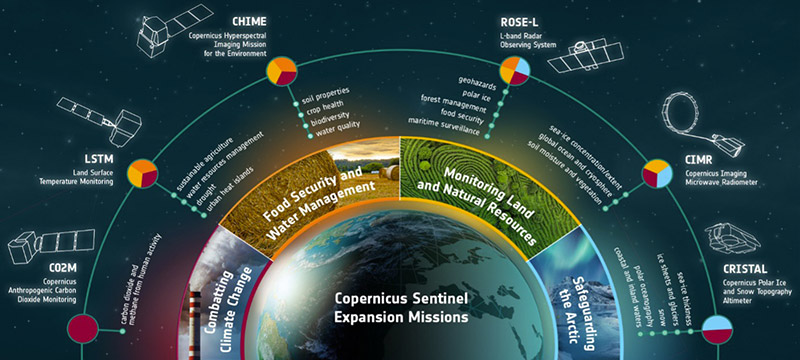Copernicus 2.0 & WEkEO: entering the next phase of the Copernicus programme
The next phase of the Copernicus programme is well underway. As we look to the future of the Copernicus programme, WEkEO will continue to play an important role in providing an easy-to-use, yet powerful, data access platform specialised in Copernicus environmental data straight from the source.
Copernicus 2.0: renewed commitment for the Copernicus programme and WEkEO
The Copernicus programme, which started in 2014, has now become one of the most important Earth Observation data providers in the world, producing high-quality and reliable data on an open and free to use basis.
The programme and its Services have become trusted sources for understanding the health of our planet, from the atmosphere to the oceans, supporting policymaking, research and many different economic actors.
After 7 years of marked successes, since mid-2021, we have entered the second phase of the Copernicus programme, the so-called “Copernicus 2.0”. The European Commission renewed its commitment to the Copernicus programme with €5.8 billion in funding that will allow the institutions entrusted with implementing the Copernicus Services to continue providing world class environmental data.
This renewed commitment also extends to the WEkEO platform which will continue to be a key reference for Copernicus Data and Information Access Services (DIAS) for environmental data, benefiting from a direct link to the Copernicus services’ data infrastructure.
Copernicus Horizon 2035 Conference: the future of the Copernicus programme
During the Copernicus Horizon 2035 Conference that took place on 16 and 17 February 2022 in Toulouse, the European Commission, its implementing partners and key user community representatives came together to take stock of the achievements made so far and discuss the future of the Copernicus programme.
Stakeholders underlined the importance of the Copernicus programme for understanding climate change and supporting decision makers to address this challenge. They also stressed the need to bring the programme to the next level, increase the digitalisation of the programme and make access to data easier in order to better serve user communities and increase user uptake, thus providing opportunities to new space actors.
Both the European Commission and the European Space Agency confirmed that the new Sentinel-4 and Sentinel-5 satellites, as well as the second generation of the existing satellites (Sentinel-1, -2, -3, -6) are on track to be launched in the coming years. They also confirmed that they are pursuing work on the Copernicus expansion missions, which will substantially expand the programme’s current capabilities, meeting user and EU policy needs in a wide range of areas from monitoring the Arctic to supporting global greenhouse gas monitoring efforts.
 The six high-priority Copernicus Sentinel Expansion missions. (Source: ESA)
The six high-priority Copernicus Sentinel Expansion missions. (Source: ESA)
As a Copernicus DIAS boasting powerful processing tools and virtual environments, WEkEO is a key tool in making access to Copernicus and Sentinel data easier and more accessible. It supports a wide range of user communities harnessing the power of Copernicus environmental data and will continue to do so as the Copernicus programme evolves to generate even more environmental data that can be leveraged by WEkEO users to provide solutions to tomorrow’s challenges.


